This “Limited Edition” Blu-ray from Radiance Films is now available for purchase.
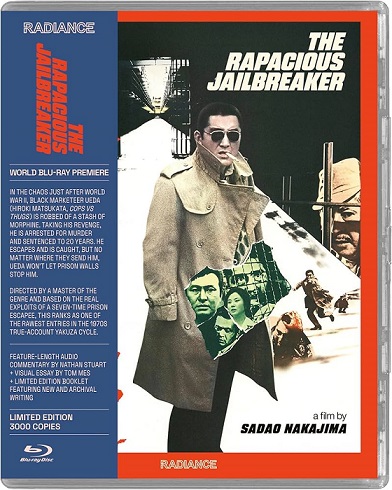
We’ve all seen movies involving prison breaks, but have you ever seen one that featured the same character escaping his cell, well, multiple times in the same story? That is the basic concept behind the period feature The Rapacious Jailbreaker, a Japanese film featuring yakuza story elements that is loosely based on the exploits of a real figure.
The film is extremely well-regarded in Japan, but has been nearly impossible to find in this part of the world. Now, Radiance Films is debuting the title on Blu-ray. It features a high-definition image provided to the distributor by the Toei Company. First impressions suggest it is a solid presentation, delivering the title with some natural grain. While one imagines the source could have been cleaned up even more, it’s obviously the best release the film has ever received in the western world. And an extremely clean and sharp image doesn’t exactly suit the story of a life lived under horrible circumstances.
At the close of World War II, a desperate Masayuki Ueda (Hiroki Matsukata) attempts to earn a living as a black marketeer. When morphine is stolen from him, he murders the criminal who took it in retaliation. Ueda is later captured and sentenced to 20 years in a Hiroshima prison. The truly terrible conditions he must endure inspire him on what turns out to be a lifelong mission. All Ueda wants is to get away, lashing out at cruel authority figures (including guards and medical staff) and showing that they can’t contain him. He soon forms an unusual escape plan that ultimately pays off. Yet he is recaptured again, before teaming with other inmates with criminal backgrounds on a new plot to get out. This continues again and again throughout the film, with his sentence actually increasing every time he gets locked back up.
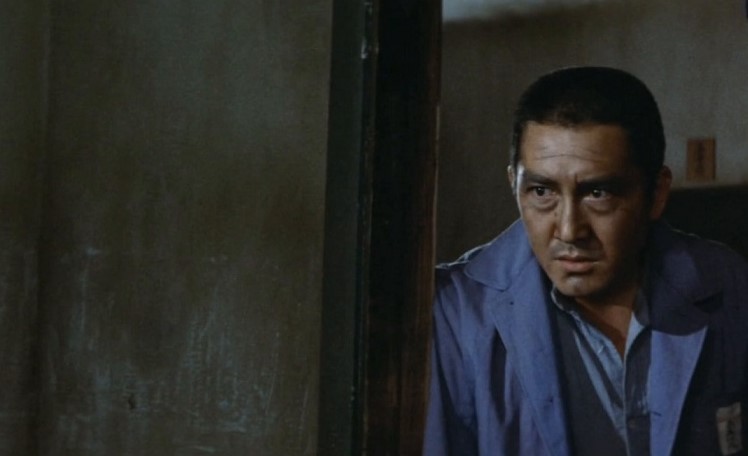
It’s clear that Ueda is cold and self-centered, building very few personal relationships along the way (and later killing those he has developed antagonistic relationships with). It’s a repetitive cycle for a narrative, but one that is fascinating to watch.
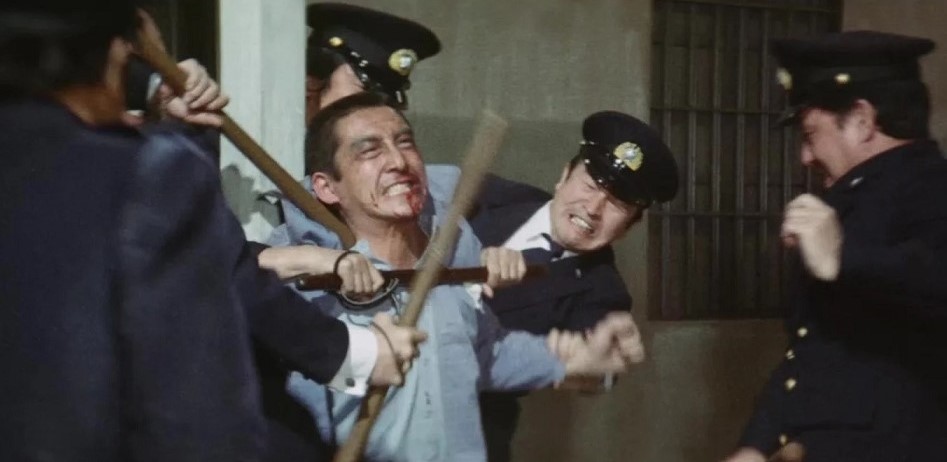
There is a sense of authenticity to the jail and the mistreatment of prisoners. Over the course of the picture, viewers see all of the minute details of these institutions, including being cleaned, as well as the beatings given for misbehavior. The prison break sequences are each quite different, with the first one, involving a tight squeeze, making a distinct impression. There is also an exciting escape involving other prisoners who attempt to scale a large wall and not get seen by guards. It’s a long process, and the film shows Ueda and others sneaking cigarettes past officials to buy the silence of cellmates while they attempt to dig their way out.
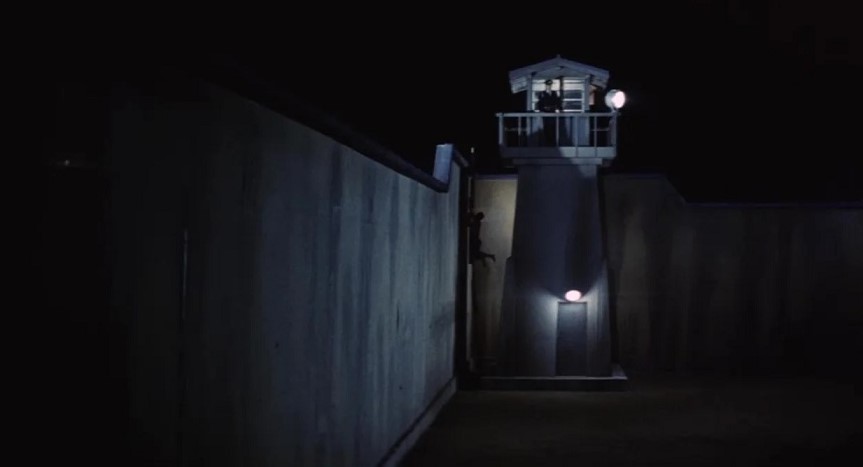
Audiences do have to accept the fact that Ueda is a criminal who acts impulsively, all to serve his own needs. If one can get past this (and I did), then it is still quite remarkable to watch his journey. Matsukata is a compelling performer, presenting the lead with a blunt manner, intent stare and willingness to react on the stop to any situation. There is a bit of narration from the character, but no deep reflection, only a quick study of the reactions of others and the steps needed to take to fulfil his plans. This tactic actually works well, allowing viewers to search for any humanity themselves and wonder about his personality. Additionally, Ueda’s frequently selfish acts create additional tension to the tale. You don’t know exactly what his intentions are with others, even family members, and this adds layers of discomfort and uncertainty to the proceedings.
By the close, Ueda does form something of a bond with another prisoner, which leads to a violent but not entirely selfish act (that, of course, results in another extension to his sentence).
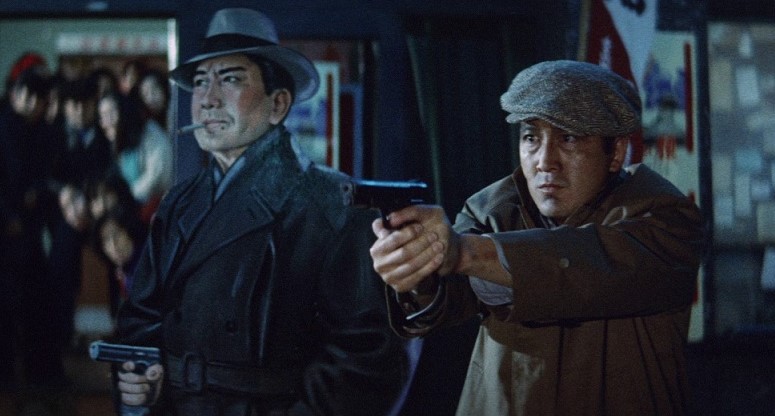
The film is also effective at showing how others in this world can be just as inhumane. The picture is set during the US occupation and features a truck full of soldiers driving right over one of the escapees when he steps onto the road and attempts to get their assistance. It’s a cold and cruel existence in this film and it’s rare to see anyone looking out for one another.
The meanness on display stands out, as do the believable portraits of the morally gray characters and their impossibly difficult situations. Admittedly, the finale simply suggests that the lead will never change and things will continue on a similar pattern. I’m going to assume that the source for the story wasn’t, at the time, a senior and/or in a frame of mind for self-reflection or willing to come to any deep conclusion about what it all meant. Despite this repetition, it is still a powerful film that will impress anyone with a taste for yakuza cinema.
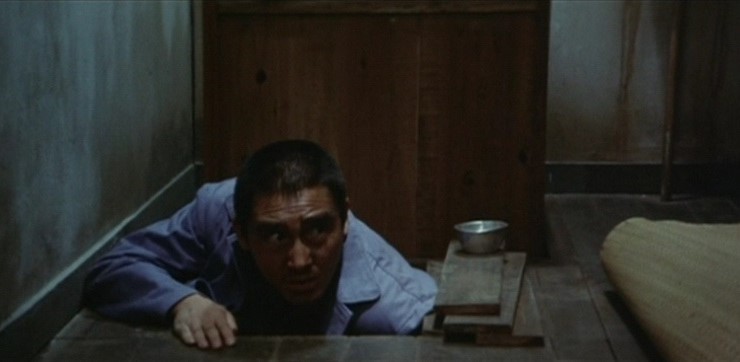
In addition to the film, there are more goodies. The historian commentary track provides a ton of background detail about the picture and everyone involved. Early on, the speaker actually apologizes for some of the tangents that he might go on, but it’s clear that he is an authority on the subject and provides notable production information. He is an admirer of star Matsukata’s work. The critic notes that the performer sells the wild, impulsive nature of the character incredibly well, while admiring the minutia about prison life, noting some of his favorite escapes, like a tight squeeze through the waste sewer of the solitary confinement cell. This speaker explains that the character was able to break his handcuffs because, after the war, the metals used to make them were harder to come by and composed of a mix of weaker elements. These kinds of facts are enlightening and fun to listen to.
There is also an informative featurette in which a film authority details the life and career of director Sadao Nakajima. He notes that Nakajima was one of the three big yakuza film directors working at Toei, along with Kinji Fukasaku and Jun’ya Satô (all of these giants of the industry who specialized for a long period in yakuza movies based on true stories). Biographical information about Nakajima’s mentors and influences are included, along with an overview of his career with brief but interesting comments on some of his most notable features.
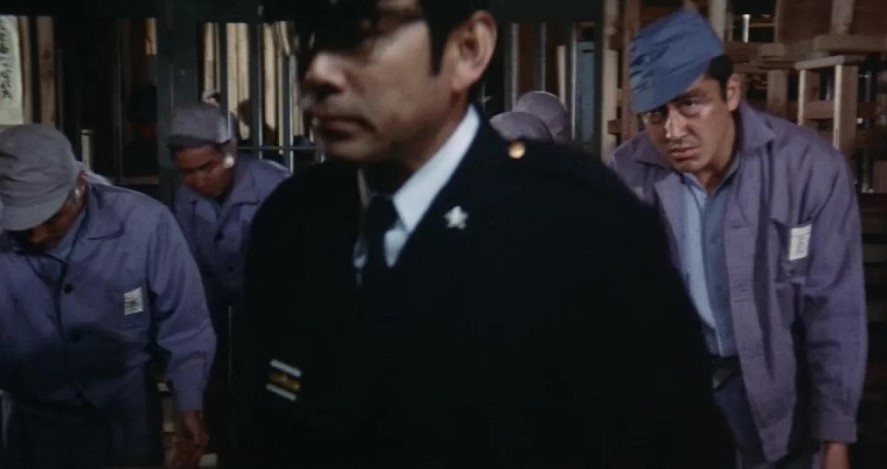
Curious factoids include Nakajima was not pleased at the first film he was assigned to direct, Female Ninja Magic (1964), a period action film with erotic elements, but that its box office success and popularity resulted in more jobs. He eventually landed the critically lauded crime picture, Yakuza Gurentai (1966), which set him on a course to make many notable gangster movies. It’s a very engaging track that will leave viewers wanting to find more of Nakajimi’s titles.
As mentioned, if you’ve picked up any Kinji Fukasaku crime pictures over the past few years on Blu-ray, like The Threat, Sympathy for the Underdog, Battles Without Honor and Humanity, or Hokuriku Proxy War, then you owe it to yourself to add The Rapacious Jailbreaker to your collection. It’s another notable title in the genre, with a slightly different take on prison breaks, as well as criminals and their hardships. As with other releases from various Japanese filmmakers, this is an exciting title with enough extras to help one get a deeper sense of what director Nakajima was attempting and how fresh his approach was. Radiance Films is releasing this as a “Limited Edition” Blu-ray, so be sure to pick it up before it’s gone.


